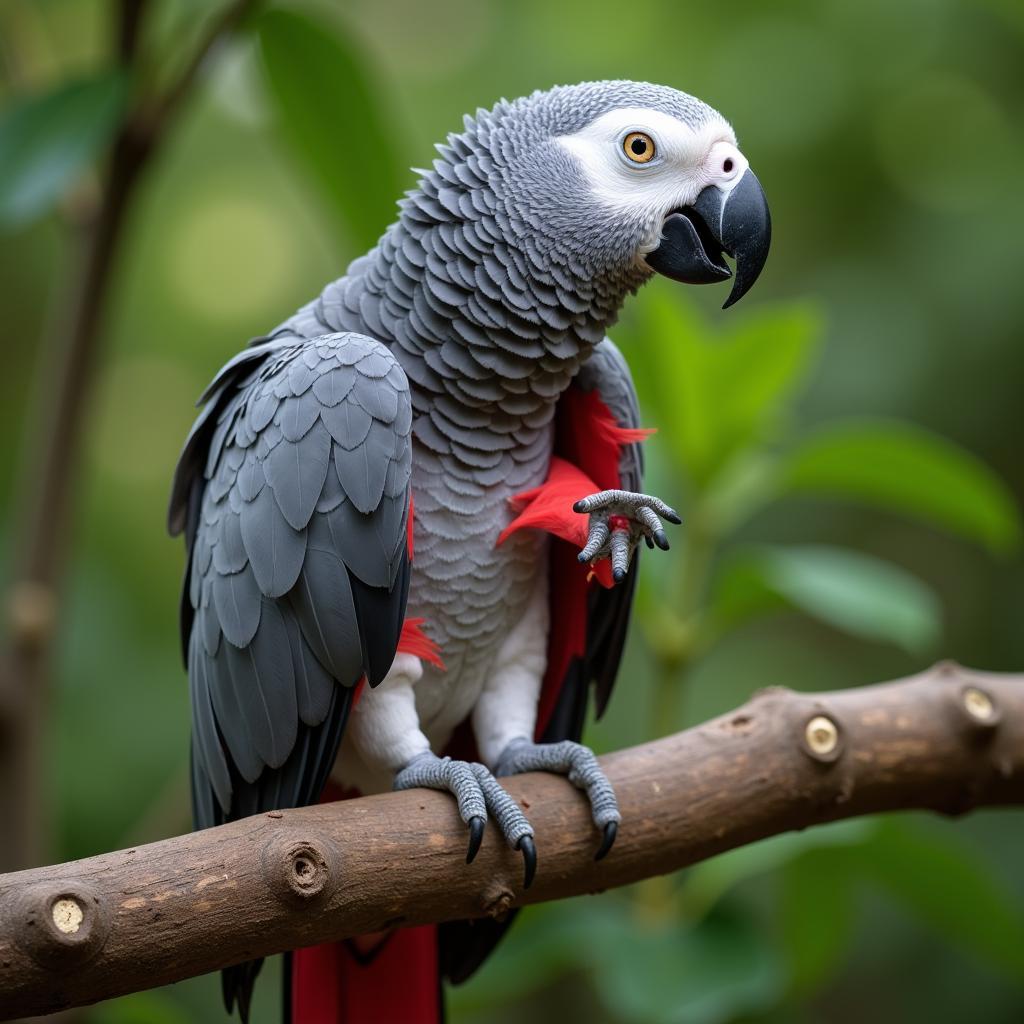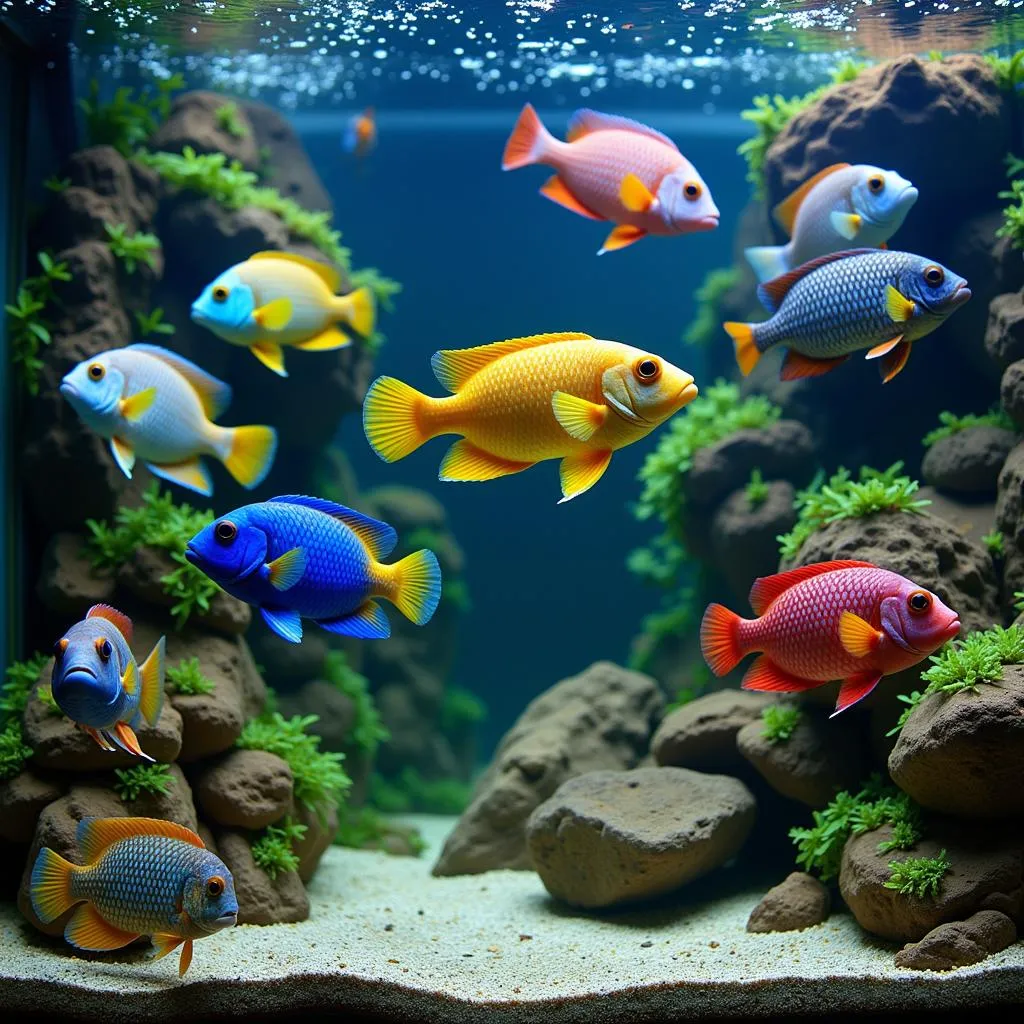African Grey Broken Wing: A Guide to Care and Recovery
An African Grey parrot with a broken wing is a distressing sight for any bird owner. These intelligent and social creatures rely heavily on their ability to fly, and an injury like this can be frightening and debilitating. Knowing how to respond quickly and provide the right care can make a significant difference in your feathered friend’s recovery.
 African Grey parrot with a visible wing injury
African Grey parrot with a visible wing injury
Understanding the Severity of the Injury
Before you can administer any aid, it’s crucial to assess the situation. A broken wing in an African Grey can range from a minor fracture to a severe break, each requiring a different approach.
Signs of a Broken Wing:
- Drooping: The affected wing might hang lower than usual or appear limp.
- Swelling: Inflammation around the injured area is a common indicator of a fracture.
- Bleeding: While not always present, open wounds might accompany the break.
- Unusual Angling: The wing might appear bent or twisted at an odd angle.
- Reluctance to Move: Your bird might be reluctant to fly or perch, exhibiting signs of pain.
Immediate Steps to Take
- Stay Calm: Your parrot will sense your anxiety. Take deep breaths and approach the situation with a soothing voice and gentle movements.
- Isolate the Bird: Carefully transfer your African Grey to a smaller cage or carrier, limiting its movement and potential for further injury.
- Control Bleeding: If there’s bleeding, apply gentle pressure to the wound using a clean gauze or cloth.
- Contact an Avian Vet: This is non-negotiable. A qualified avian veterinarian has the expertise to diagnose the severity of the break and provide the correct treatment plan.
The Road to Recovery
Treatment for a broken wing largely depends on the type and severity of the fracture.
- Splinting or Bandaging: For simpler fractures, the vet might immobilize the wing using a splint or bandage, promoting natural healing.
- Surgery: Complex breaks might require surgical intervention, especially if the fracture involves joints or multiple bone fragments.
 A veterinarian examining an African Grey parrot's wing
A veterinarian examining an African Grey parrot's wing
Post-Treatment Care:
- Quiet and Rest: Provide a calm and quiet environment for your parrot to recuperate without stress.
- Pain Management: Your vet will prescribe pain medication to keep your bird comfortable.
- Modified Cage Setup: Remove perches that are too high or require significant flight. Offer low-placed food and water dishes for easy access.
- Physical Therapy: In some cases, the vet might recommend gentle exercises to restore wing function as healing progresses.
“Avian fractures are complex and require specialized care,” says Dr. Emily Carter, an avian veterinarian based in California. “Early intervention and a well-structured recovery plan are crucial for ensuring the best possible outcome for your parrot.”
Preventing Future Wing Injuries
Prevention is always better than cure. Here are some ways to minimize the risk of wing injuries in your African Grey:
- Spacious Cage: Ensure your parrot’s cage is large enough to allow for comfortable movement and flight within.
- Wing Clipping: Consult your vet about appropriate wing trimming to limit flight distance and reduce the risk of high-impact crashes.
- Safe Environment: Secure your home, eliminating hazards like ceiling fans, open windows, or other pets that could cause injury.
Conclusion
A broken wing can be a traumatic experience for both you and your African Grey parrot. However, with swift action, proper veterinary care, and dedicated home care, you can significantly increase the chances of a full recovery. Remember, patience and understanding are key during this time. By providing a safe and nurturing environment, you can help your feathered companion regain its strength and, hopefully, take flight once again.
FAQs
1. How long does it take for a broken wing to heal in an African Grey?
Healing time varies depending on the severity of the fracture, but it typically takes several weeks to a few months.
2. Will my African Grey ever fly again after a broken wing?
The chances of regaining flight depend on the severity and treatment of the injury. Some parrots regain full flight, while others might only achieve limited mobility.
3. What should I feed my African Grey during recovery?
Maintain a balanced diet of high-quality parrot pellets, fresh fruits, vegetables, and occasional treats. Consult your vet for specific dietary recommendations during recovery.
4. How can I tell if my African Grey is in pain?
Signs of pain in parrots can be subtle. Look out for changes in behavior such as reduced activity, loss of appetite, fluffed feathers, or vocalizations.
5. When can I return my African Grey to its usual cage after recovery?
Your vet will advise you on the appropriate time to transition your parrot back to its regular cage, based on its healing progress.
For more information about caring for your African Grey, you can explore other articles on our website, including “African Grey Parrot Egg Laying Season” and “African Grey Bird Cage.”
If you have any concerns about your African Grey’s health or well-being, please do not hesitate to contact us. Our team is available 24/7 to assist you. You can reach us at +255768904061 or kaka.mag@gmail.com. We are located at Mbarali DC Mawindi, Kangaga, Tanzania.
